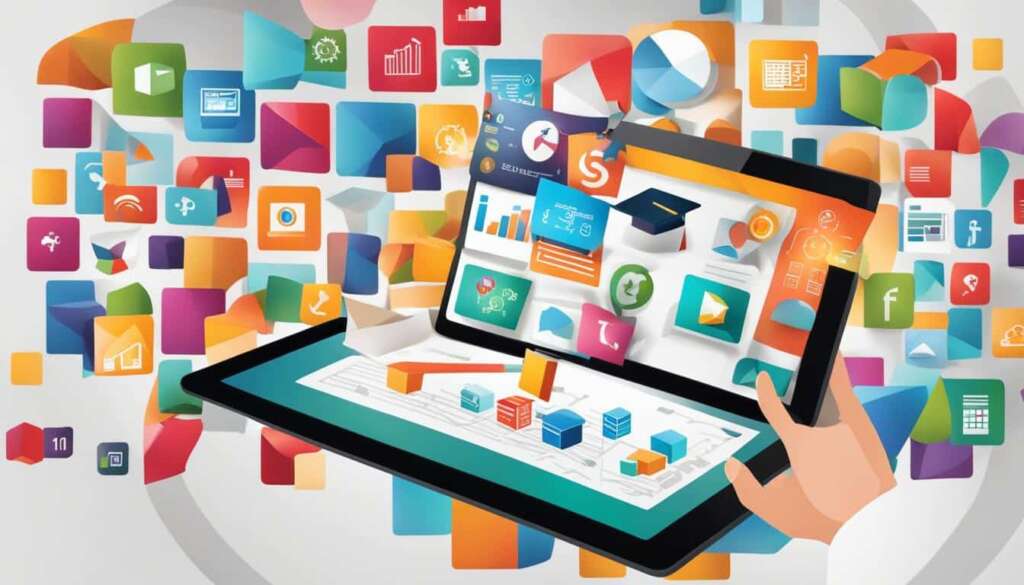Table of Contents
Technology use in learning and development has revolutionised the field of education. With the advent of educational technology, such as e-learning platforms, digital tools, and innovative strategies, learners now have access to a wealth of information and resources at their fingertips. The integration of technology in education has opened up new possibilities for delivering effective and engaging learning experiences.
This article will explore the various ways in which technology is being leveraged in learning and development, including the benefits of e-learning, the effectiveness of blended learning approaches, the rise of online learning platforms, and the integration of technology in learning management systems. By examining these aspects, we aim to provide insights into how technology is transforming the learning landscape and shaping the future of education.
The Benefits of E-Learning in Learning and Development
E-learning has revolutionized the field of learning and development, providing learners with numerous advantages. With the integration of technology, e-learning offers flexibility and convenience, allowing learners to access educational content anytime, anywhere. This accessibility eliminates the constraints of traditional classroom-based learning and enables learners to progress at their own pace.
E-learning platforms provide interactive and engaging learning experiences through the use of multimedia content, simulations, and virtual reality. These immersive learning tools enhance learner engagement and retention by catering to different learning styles and preferences. Learners can actively participate in lessons, apply their knowledge through simulations, and explore virtual environments, fostering a deeper understanding of the subject matter.
One of the key advantages of e-learning is its ability to personalize the learning experience. Learners can follow personalized learning paths tailored to their individual needs, interests, and abilities. Adaptive assessments and immediate feedback further enhance the learning process, allowing learners to track their progress, identify areas for improvement, and receive targeted guidance.
Research has shown that e-learning is highly effective in improving learning outcomes and knowledge retention compared to traditional classroom-based methods. Learners can revisit content, access additional resources, and engage in collaborative discussions online. This enhanced accessibility and reinforcement contribute to a more comprehensive and lasting understanding of the subject matter.
E-learning also plays a vital role in facilitating lifelong learning. With the continuous advancements in technology, learning opportunities are no longer confined to a specific time or age. Individuals can engage in online courses, webinars, and digital resources to enhance their skills, pursue personal interests, and stay updated in their professional fields.
In conclusion, e-learning offers significant benefits in learning and development. Its flexibility, interactivity, personalization, and effectiveness make it a valuable tool for learners of all ages. By harnessing the power of technology, e-learning empowers individuals to pursue lifelong learning and adapt to the ever-changing digital landscape.
The Role of Technology Integration in Education
Technology integration in education has revolutionized the teaching and learning experience, shaping the way educators deliver instruction and engage with students. Through the use of instructional technology tools, such as interactive whiteboards, multimedia presentations, and educational apps, teachers can enhance teacher-student interactions, promote active learning, and increase student engagement. These technologies offer a wide range of possibilities, allowing educators to create dynamic and interactive lessons that capture students’ interest and foster their understanding of complex concepts.
Additionally, the implementation of learning management systems (LMS) has provided a centralized platform for managing courses, student data, and assessments. LMS streamlines administrative tasks, allowing educators to focus more on teaching instead of paperwork. Moreover, LMS facilitates online collaboration among students and teachers, enabling seamless communication, resource sharing, and group work. With the integration of technology in education, teachers can create personalized learning experiences, addressing the diverse needs and learning styles of their students.
Furthermore, technology use in learning and development enables differentiated instruction and the integration of real-world applications into the curriculum. Various instructional technology tools, such as simulations, virtual reality, and augmented reality, offer immersive and experiential learning opportunities. This approach not only deepens students’ understanding of subject matter but also prepares them for real-world challenges by applying their knowledge and skills in authentic contexts. As technology continues to advance, the future of technology integration in education holds promise for even more innovative and interactive learning experiences.
FAQ
What is e-learning and how does it benefit learning and development?
E-learning refers to the use of technology to deliver educational content and resources. It offers benefits such as flexibility, convenience, interactive learning experiences, personalized learning paths, adaptive assessments, and improved learning outcomes.
How does technology integration in education enhance teaching and learning?
Technology integration in education enhances teaching and learning by promoting active engagement, increasing student participation, supporting differentiated instruction, facilitating online collaboration, and providing tools for real-world applications.
What are learning management systems and how do they streamline education?
Learning management systems are platforms that allow for central management of courses, student data, assessments, and online collaboration. They streamline administrative tasks, promote online learning, and facilitate communication between teachers and students.
What challenges and considerations should be taken into account when implementing technology in the classroom?
When implementing technology in the classroom, challenges such as access to devices and internet connectivity, technical difficulties, training for teachers, digital divide, and privacy concerns should be considered and addressed.
What are the future trends in technology use for learning and development?
Future trends in technology use for learning and development include the integration of artificial intelligence, virtual reality, gamification, adaptive learning, mobile learning, and data analytics to personalize learning experiences and improve learning outcomes.













